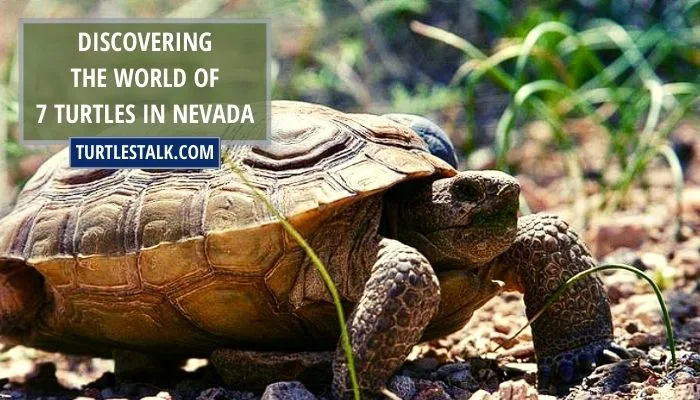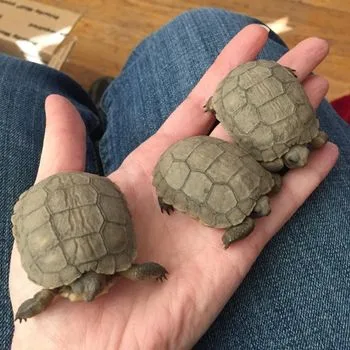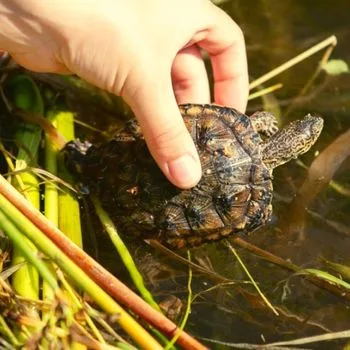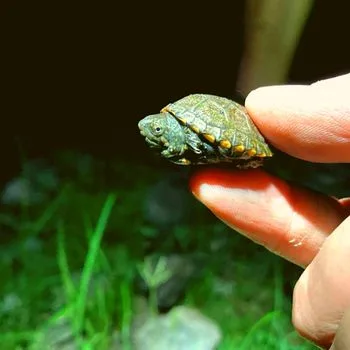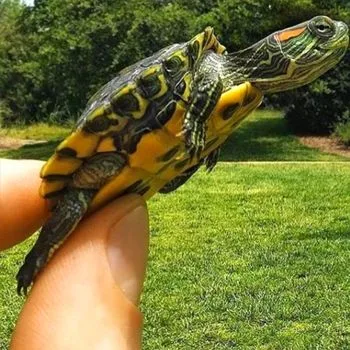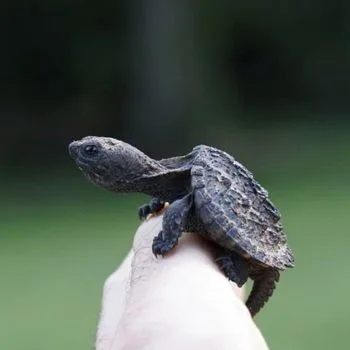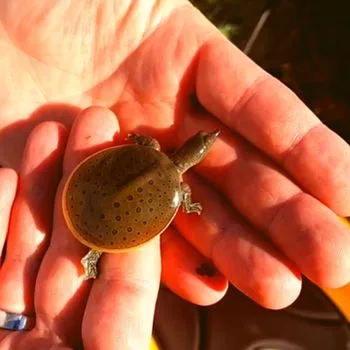Discovering the World of 7 Turtles in Nevada
Turtles, turtles everywhere! Well, not quite everyone. But if you happen to be in Nevada, you’re certainly in luck! There are seven different species of turtles living in the great state of Nevada – two native and five non-native.
The Desert Tortoise is the official state reptile and the Western Pond Turtle is also a local favorite. So if you’re looking for a unique experience with some shelled friends, head on over to Nevada and check out these amazing creatures!
| # | Name | Details | Image |
| 1 | Desert Tortoise (Gopherus Agassizii) |
| 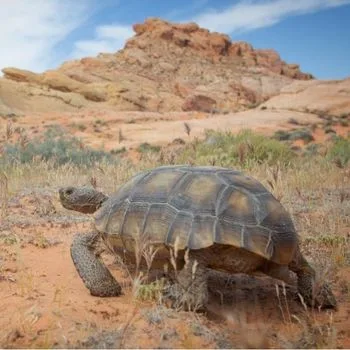 |
| 2 | Western Pond Turtle (Actinemys Marmorata) |
| 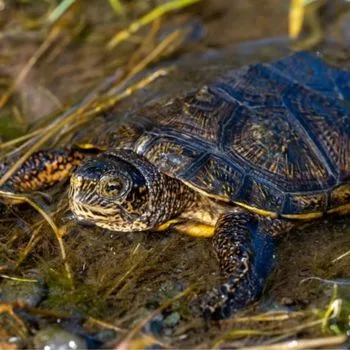 |
| 3 | Sonora Mud Turtle (Kinosternon Sonoriense) |
| 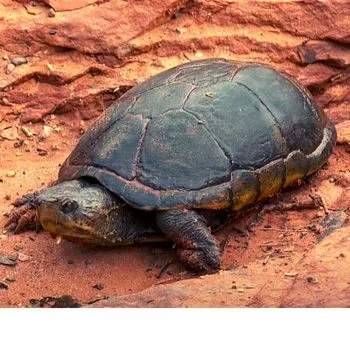 |
| 4 | Western Painted Turtle |
| 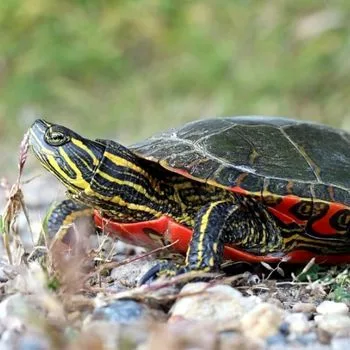 |
| 5 | Red Eared Slider (Trachemys Scripta Elegans) |
| 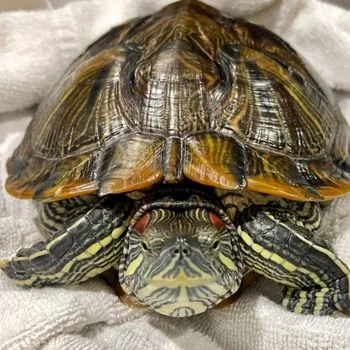 |
| 6 | Common Snapping Turtle (Chelydra serpentina) |
| 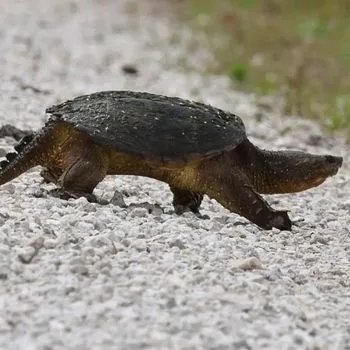 |
| 7 | Texas Spiny Softshell (Apalone Spinifera Emoryi) |
| 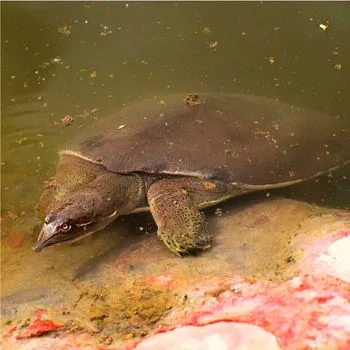 |
7 Turtles You Can Find in Nevada
In total, there are 7 species of turtles in the state of Nevada. This guide will take you on an exploration through each turtle type and provide tips for providing them with proper care. So, let’s get started on our journey into discovering all the wonders that these reptiles have to offer!
1. Desert Tortoise (Gopherus Agassizii)
- Family: Testudinidae
- Genus: Gopherus
- Type: Terrestrial turtle
- Natural Habitat: Desert and arid environments of the southwestern united states and northwestern mexico
- Lifespan: 80-100 years
- Maximum Size: 14-15 inches
- Maximum Weight: 35 pounds
- Prone to Diseases: Upper respiratory tract disease (urtd), mycoplasmosis, and shell infections
- Aggression Level: Not aggressive
- Predators: Birds of prey, mammals such as coyotes, and reptiles such as gila monsters
- Domestication: Can be kept as a pet
The remarkable Desert Tortoise (Gopherus Agassizii), native to the desert and arid regions of the Southwestern United States and northwestern Mexico, is an intriguing species. With lifespans up to 80-100 years and adult sizes ranging from 14-15 inches in length and 35 pounds in weight, they can be found here in Nevada.
Although not aggressive, they have various predators such as birds of prey, coyotes, Gila Monsters and other mammals. With that said, their status is threatened by human activities like development and livestock grazing which has led to the endangerment of this species in the United States. Fortunately for these reptiles, it is protected by the Endangered Species Act.
However it is illegal to keep them as pets in California and Arizona so please check local regulations before doing so.
Desert Tortoises are prone to diseases such as Upper Respiratory Tract Disease (URTD), mycoplasmosis, as well as shell infections if not properly looked after. They also aren’t well adapted to aquatic environments so need specific care needs when kept in captivity here in Nevada.
In conclusion, Desert Tortoises are unique creatures that call Nevada home but with their endangered status we must do what we can to protect them.
2. Western Pond Turtle (Actinemys Marmorata)
- Family: Emydidae
- Genus: Actinemys
- Type: Semi-aquatic turtle
- Natural Habitat: Lakes, ponds, rivers
- Lifespan: 80 years in captivity
- Maximum Size: 5 – 8 inches
- Maximum Weight: 10 – 20 pounds
- Prone to Diseases: Respiratory diseases, metabolic bone issues
- Disease Carrier: Salmonella
- Aggression Level: Not aggressive
- Predators: Weasels, raccoons, otters, ospreys, bullfrogs, crayfish, opposums and coyotes
- Domestication: Can be kept as pet
The Western Pond Turtle (Actinemys marmorata) is a magnificent creature native to North America, found in the west of the United States, including Nevada. These semi-aquatic turtles have a unique patterned shell up to 8 inches long and can live up to 80 years when kept as pets. With webbed feet for swimming and its streamlined shape, they are well adapted to their watery habitats such as ponds, rivers or lakes surrounded by aquatic plants.
Western Pond Turtles primarily prey on insects or small fishes while also serving as potential food themselves for predators like weasels, raccoons, otters or ospreys.
Unfortunately, their population has been reduced significantly over time resulting in them being listed as species of concern in some states and threatened in others. A sacred animal worthy of our respect – you may be lucky enough still observe these creatures around California and Oregon if you keep an eye out!
3. Sonora Mud Turtle (Kinosternon Sonoriense)
- Family: Kinosternidae
- Genus: Kinosternon
- Type: Mud turtles
- Natural Habitat: Fields, offshore islands, fresh or brackish water containing marshes, ditches that are wet, and tiny ponds.
- Lifespan: 10+ years
- Also Known As: Sonoyta mud turtle
- Maximum Size: 5 – 7 inches
- Maximum Weight: 10 to 30+ pounds
- Prone to Diseases: Vitamin deficiencies, metabolic bone disease, and intestinal parasites
- Disease Carrier: Salmonella
- Aggression Level: Aggerssive
- Predators: Bullfrogs, large fishes, alligators
- Domestication: Can be kept as pets
The Sonora Mud Turtle (Kinosternon sonoriense) is a small but resilient turtle native to the southwestern United States and northern Mexico. This incredible species lives in desert areas, streams, and ponds with their flattened shells allowing for easy aquatic adaptation.
Adult males usually measure up to 5 to 9 cm (2 to 3.5 in) from head-to-tail and females may appear slightly larger due to their longer shell. Unfortunately, activities such as habitat destruction have placed some populations of this beautiful species at risk of endangerment or even extinction in Nevada.
With adequate protection however there’s hope for them yet – so let us take steps towards preserving these precious creatures! They are not known to be aggressive towards humans, but they do possess unique adaptations that help protect themselves from predators such as snakes or birds of prey by using powerful bites or retreating into their shells when handled unexpectedly.
Although it is illegal own a pet Sonora mud turtle in some states, if you are capable of providing special care and environment they can make fascinating pets too!
4. Western Painted Turtle
- Family: Emydidae
- Genus: Chrysemys
- Type: Aquatic turtle
- Natural Habitat: Likes bodies of water with soft mud floors and abundant aquatic plants, e.g. rivers, lakes, wetlands, oxbows, ponds, ditches, and reservoirs.
- Lifespan: Usually 20 – 30 years, but in better habitat can live up to 50 years
- Maximum Size: 4 – 6 inches
- Maximum Weight: Gets about 1 pound
- Prone to Diseases: Vitamin deficiencies, metabolic bone disease, and intestinal parasites
- Disease Carrier: Salmonella
- Aggression Level: Aggressive baskers
- Predators: Raccoons, skunks, foxes, herons, other birds, snakes, and large predaceous fish
- Domestication: Can be kept as pets
The Western Painted Turtle, scientifically known as Chrysemys picta bellii, is an aquatic creature native to North America. It can be found in states such as Nevada; making its way up right into British Columbia in Canada. Adults typically measure between 9-10 inches in length while juveniles/hatchlings are smaller at around 2-3 inches.
They live in freshwater habitats such as ponds, rivers and lakes where they swim with ease due to their long tails and streamlined shells of webbed feet. Although usually not aggressive creatures, they have predators that include raccoons and herons among others which make them a species of special concern in some regions.
In most US states it is legal to keep Western Painted Turtles as pets with proper care but one should always check local regulations for necessary requirements first.
5. Red Eared Slider (Trachemys Scripta Elegans)
- Family: Emydidae
- Genus: Trachemys
- Type: Aquatic turtle
- Natural Habitat: Streams, rivers, ponds, lakes, swamps, and marshes
- Lifespan: 20 – 30 years
- Also Known As: Red-eared terrapin
- Maximum Size: 7 – 12 inches, females get larger than 12 inches
- Maximum Weight: 3 – 6 pounds
- Prone to Diseases: Respiratory infections, shell rot, and other diseases if kept in unsanitary conditions.
- Disease Carrier: Salmonella
- Aggression Level: Not aggressive
- Predators: Raccoons, otters, fish, frogs, snakes, skunks and birds
- Domestication: Can be kept as pets
The Red Eared Slider (Trachemys scripta elegans) is a freshwater reptile with a striking appearance. Found in Nevada’s waterways, these turtles can reach up to 10-12 inches long as adults and can live for an impressive 30 years. They have webbed feet that are adapted for swimming, making them incredibly agile aquatic creatures.
Males and females exhibit different size ranges, with males being more diminutive compared to the females and juveniles measuring only 2-3 inches when fully grown. Although they may take on aggressive postures if threatened, their bite force is not enough to cause any damage to humans or other larger animals.
It’s important that we respect the habitats of these amazing reptiles so that future generations will be able to enjoy them too – keep their environments clean by disposing of garbage properly and avoid disturbing the fragile ecosystems where they make their homes!
6. Common Snapping Turtle (Chelydra serpentina)
- Family: Chelydridae
- Genus: Chelydra
- Type: Freshwater turtle
- Natural Habitat: Freshwater habitats such as lakes, rivers, and swamps
- Lifespan: 50 years
- Maximum Size: 19 inches
- Maximum Weight: 40 pounds
- Prone to Diseases: Fungal infections and shell rot
- Aggression Level: Not aggressive until provoked
- Predators: River otters, bears and coyotes
- Domestication: Not recommended as pets
The Common Snapping Turtle, scientifically known as Chelydra serpentina, is an aquatic species native to freshwater habitats such as lakes, rivers and swamps. These turtles are highly adaptable and can live up to 50 years in the wild.
Adult Common Snapping Turtles typically measure 10-16 inches in shell length but can grow up to 19 inches and weigh around 40 pounds. They have a powerful bite with an estimated pressure of over 600 psi, making them one of the strongest biters among reptiles. Despite their strength they are generally not aggressive animals, though it is best to not provoke them and take caution around them.
Common Snapping Turtles often face threats from predators such as river otters, bears and coyotes when living out in the wild.
Unfortunately, their habitat is also threatened by human activities such as development and pollution which can lead to a decrease in population numbers if conservation efforts are not taken soon here in Nevada.
Although they make fascinating pets due to their long lifespan of up to 50 years when cared for properly, some states have regulations or restrictions on owning them so check with local authorities before acquiring this species as a pet.
These turtles have webbed feet for swimming and a long tail for propulsion allowing them to move quickly through water which also makes them difficult prey for predators.
Furthermore, although they occupy multiple states across North America from Alabama to Wyoming there is no other name than the Common Snapping Turtle so it’s easy to identify.
It should be noted that this species does not carry any significant disease that can be transmitted to humans yet they may still be prone to diseases like fungal infections or shell rot when kept in unsanitary conditions so proper care must be taken here in Nevada when considering owning one of these remarkable creatures as a pet.
7. Texas Spiny Softshell (Apalone Spinifera Emoryi)
- Family: Trionychidae
- Genus: Apalone
- Type: Freshwater turtle
- Natural Habitat: Pecos rivers
- Lifespan: 20+ years
- Also Known As: Guadalupe spiny softshell
- Maximum Size: Males: 5 – 9 inches, females: up to 20 inches
- Maximum Weight: Males: 0.3 – 1.5 pounds, females: 26+ pounds
- Prone to Diseases: Vitamin deficiencies, metabolic bone disease, and intestinal parasites
- Disease Carrier: Salmonella
- Aggression Level: Can be aggressive if threatened
- Predators: Adult softshell turtles fall prey to alligators primarily, while young ones are consumed by large fish, other turtles, and mammals like skunks and armadillos. eggs of the softshell turtle are consumed by birds, bears, racoons, and red foxes.
- Domestication: Not recommended as pet
Have you ever seen a creature quite like the Texas Spiny Softshell? It is an impressive freshwater turtle that can be found along the banks of the Pecos River. These remarkable creatures are carnivorous and aggressive if threatened, making them fearsome though fascinating to behold.
Reaching up to 20 inches long for females and weighing up to 26 pounds, these Nevada residents have a distinct spiny shell that helps protects them from predators such as alligators, large fish, skunks and armadillos. Yet despite their extraordinary natural defenses they remain vulnerable due to disease-carrying humans who visit their habitat.
Thankfully though with conservation efforts, we may still get more chances for generations to come to witness these creatures living in harmony with nature!
Final Words
In the state of Nevada—a place rich in biodiversity—turtles play a significant role; with a variety of species dwelling in its forests, beaches, and rivers.
In this article, we took a closer look at these fascinating creatures (including their natural habitats, lifespan, size and weight, predators, and domesticability). It’s worth noting that, while keeping these turtles as pets is legal; their populations in Nevada may be declining due to habitat loss and collection for the pet trade.
It is our responsibility to ensure that these turtles remain protected and preserved for future generations to enjoy in the state of Nevada.
Other Nearby States:

